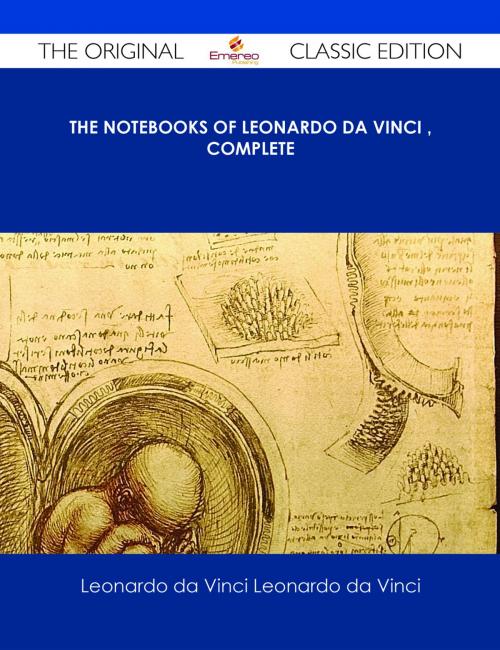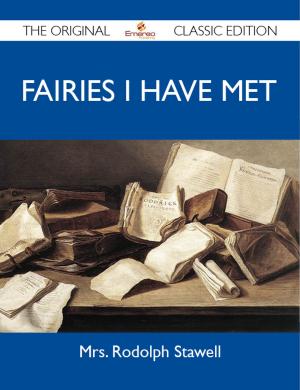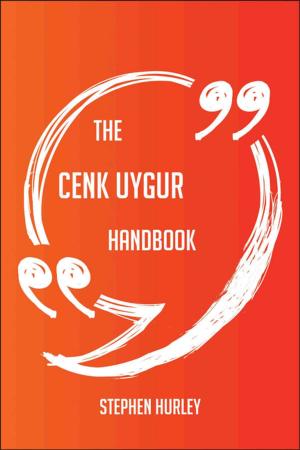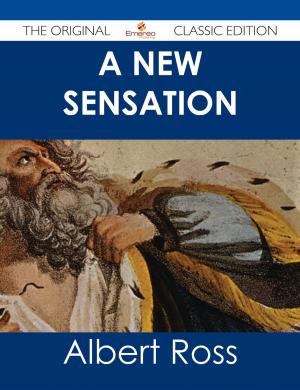The Notebooks of Leonardo Da Vinci ‚ Complete - The Original Classic Edition
Nonfiction, Reference & Language, Reference, Fiction & Literature| Author: | Leonardo da Vinci | ISBN: | 9781486493074 |
| Publisher: | Emereo Publishing | Publication: | March 11, 2013 |
| Imprint: | Emereo Publishing | Language: | English |
| Author: | Leonardo da Vinci |
| ISBN: | 9781486493074 |
| Publisher: | Emereo Publishing |
| Publication: | March 11, 2013 |
| Imprint: | Emereo Publishing |
| Language: | English |
Finally available, a high quality book of the original classic edition of The Notebooks of Leonardo Da Vinci ‚ Complete. It was previously published by other bona fide publishers, and is now, after many years, back in print.
This is a new and freshly published edition of this culturally important work by Leonardo da Vinci Leonardo da Vinci, which is now, at last, again available to you.
Get the PDF and EPUB NOW as well. Included in your purchase you have The Notebooks of Leonardo Da Vinci ‚ Complete in EPUB AND PDF format to read on any tablet, eReader, desktop, laptop or smartphone simultaneous - Get it NOW.
Enjoy this classic work today. These selected paragraphs distill the contents and give you a quick look inside The Notebooks of Leonardo Da Vinci ‚ Complete:
Look inside the book:
General remarks on perspective (40—41).—The elements of perspective:—of the point (42—46).—Of the line (47—48).—The nature of the outline (49).—Definition of perspective (50).—The perception of the object depends on the direction of the eye (51).—Experimental proof of the existence of the pyramid of sight (52—55).—The relations of the distance point to the vanishing point (55—56).—How to measure the pyramid of vision (57).—The production of the pyramid of vision (58—64).—Proof by experiment (65—66).—General conclusions (67).—That the contrary is impossible (68).—A parallel case (69).—The function of the eye, as explained by the camera obscura (70—71).—The practice of perspective (72—73).—Refraction of the rays falling upon the eye (74—75).—The inversion of the images (76).—The intersection of the rays (77—82).—Demonstration of perspective by means of a vertical glass plane (83—85.)—The angle of sight varies with the distance (86—88).—Opposite pyramids in juxtaposition (89).—On simple and complex perspective (90).—The proper distance of objects from the eye (91—92).—The relative size of objects with regard to their distance from the eye (93—98).—The apparent size of objects denned by calculation (99—106).—On natural perspective (107—109). ...GENERAL INTRODUCTION.—Prolegomena (110).—Scheme of the books on light and shade (111).—Different principles and plans of treatment (112—116).—Different sorts of light (117—118).—Definition of the nature of shadows (119—122).—Of the various kinds of shadows (123—125).—Of the various kinds of light (126—127).—General remarks (128—129).—FIRST BOOK ON LIGHT AND SHADE.—On the nature of light (130—131).—The difference between light and lustre (132—135).—The relations of luminous to illuminated bodies (136). —Experiments on the relation of light and shadow within a room (137—140).—Light and shadow with regard to the position of the eye (141—145).—The law of the incidence of light (146—147).—SECOND BOOK ON LIGHT AND SHADE.—Gradations of strength in the shadows (148—149).—On the intensity of shadows as dependent on the distance from the light (150—152).—On the proportion of light and shadow (153—157).—THIRD BOOK ON LIGHT AND SHADE.—Definition of derived shadow (158—159).—Different sorts of derived shadows (160—162).—On the relation of derived and primary shadow (163—165).—On the shape of derived shadows (166—174).—On the relative intensity of derived shadows (175—179).—Shadow as two lights of different size (180—181).—The effect of light at different distances (182).—Further complications in the derived shadows (183—187).—FOURTH BOOK ON LIGHT AND SHADE.—On the shape of cast shadows (188—191).—On the outlines of cast shadows (192—195).—On the relative size of cast shadows (196.
About Leonardo da Vinci Leonardo da Vinci, the Author:
Many of his most prominent pupils or followers in painting either knew or worked with him in Milan, including Bernardino Luini, Giovanni Antonio Boltraffio and Marco d'Oggione.nb 14 However, he did not stay in Milan for long because his father had died in 1504, and in 1507 he was back in Florence trying to sort out problems with his brothers over his father'
Finally available, a high quality book of the original classic edition of The Notebooks of Leonardo Da Vinci ‚ Complete. It was previously published by other bona fide publishers, and is now, after many years, back in print.
This is a new and freshly published edition of this culturally important work by Leonardo da Vinci Leonardo da Vinci, which is now, at last, again available to you.
Get the PDF and EPUB NOW as well. Included in your purchase you have The Notebooks of Leonardo Da Vinci ‚ Complete in EPUB AND PDF format to read on any tablet, eReader, desktop, laptop or smartphone simultaneous - Get it NOW.
Enjoy this classic work today. These selected paragraphs distill the contents and give you a quick look inside The Notebooks of Leonardo Da Vinci ‚ Complete:
Look inside the book:
General remarks on perspective (40—41).—The elements of perspective:—of the point (42—46).—Of the line (47—48).—The nature of the outline (49).—Definition of perspective (50).—The perception of the object depends on the direction of the eye (51).—Experimental proof of the existence of the pyramid of sight (52—55).—The relations of the distance point to the vanishing point (55—56).—How to measure the pyramid of vision (57).—The production of the pyramid of vision (58—64).—Proof by experiment (65—66).—General conclusions (67).—That the contrary is impossible (68).—A parallel case (69).—The function of the eye, as explained by the camera obscura (70—71).—The practice of perspective (72—73).—Refraction of the rays falling upon the eye (74—75).—The inversion of the images (76).—The intersection of the rays (77—82).—Demonstration of perspective by means of a vertical glass plane (83—85.)—The angle of sight varies with the distance (86—88).—Opposite pyramids in juxtaposition (89).—On simple and complex perspective (90).—The proper distance of objects from the eye (91—92).—The relative size of objects with regard to their distance from the eye (93—98).—The apparent size of objects denned by calculation (99—106).—On natural perspective (107—109). ...GENERAL INTRODUCTION.—Prolegomena (110).—Scheme of the books on light and shade (111).—Different principles and plans of treatment (112—116).—Different sorts of light (117—118).—Definition of the nature of shadows (119—122).—Of the various kinds of shadows (123—125).—Of the various kinds of light (126—127).—General remarks (128—129).—FIRST BOOK ON LIGHT AND SHADE.—On the nature of light (130—131).—The difference between light and lustre (132—135).—The relations of luminous to illuminated bodies (136). —Experiments on the relation of light and shadow within a room (137—140).—Light and shadow with regard to the position of the eye (141—145).—The law of the incidence of light (146—147).—SECOND BOOK ON LIGHT AND SHADE.—Gradations of strength in the shadows (148—149).—On the intensity of shadows as dependent on the distance from the light (150—152).—On the proportion of light and shadow (153—157).—THIRD BOOK ON LIGHT AND SHADE.—Definition of derived shadow (158—159).—Different sorts of derived shadows (160—162).—On the relation of derived and primary shadow (163—165).—On the shape of derived shadows (166—174).—On the relative intensity of derived shadows (175—179).—Shadow as two lights of different size (180—181).—The effect of light at different distances (182).—Further complications in the derived shadows (183—187).—FOURTH BOOK ON LIGHT AND SHADE.—On the shape of cast shadows (188—191).—On the outlines of cast shadows (192—195).—On the relative size of cast shadows (196.
About Leonardo da Vinci Leonardo da Vinci, the Author:
Many of his most prominent pupils or followers in painting either knew or worked with him in Milan, including Bernardino Luini, Giovanni Antonio Boltraffio and Marco d'Oggione.nb 14 However, he did not stay in Milan for long because his father had died in 1504, and in 1507 he was back in Florence trying to sort out problems with his brothers over his father'















